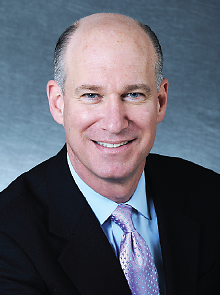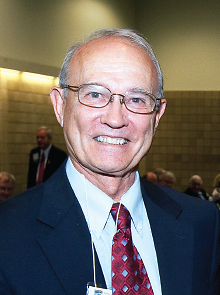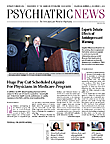The observance of World AIDS Day on December 1 each year is a reminder of how far medical science has come since the early days of the epidemic. Several psychiatrists who lived through those days recently recalled the long years of battling a previously unknown disease.
Marshall Forstein, M.D., began his psychiatric residency in San Francisco in 1980, just as the earliest hints of the AIDS epidemic appeared.
Within a few years though, the full impact of the disease was inescapable, said Forstein, an associate professor of psychiatry at Harvard Medical School. He went to see the first round of the AIDS Quilt when it was laid out on the National Mall in Washington, D.C.
“There were thousands of panels, each representing a person who had died,” he recalled recently. “Many of us found the names of people we had known but had lost touch with. It was a terrible, heart-rending way to find out about people you lost. I don’t know what percentage of the gay men of my generation has died from AIDS, but it was a significant number of people.”
On the other side of the country, Jeffrey Akman, M.D., graduated from medical school and began residency at George Washington University in 1981, just as the epidemic began.
“Young gay men were dying of what was then an unidentified infectious disease, a disease that I didn’t learn about in medical school,” Akman, now dean of George Washington University School of Medicine, recalled in a talk last year.
“Perhaps the most important thing I did was just to be present,” he said of his patients. “Fears of dying, fears of having their sexuality exposed, and fears of rejection by families, shame, embarrassment, stigma, loss, and pain were common concerns.”
Yet farther afield, APA CEO and Medical Director Saul Levin, M.D., M.P.A., first encountered the disease in his native South Africa.
“As an openly gay man, the HIV/AIDS epidemic has been a part of my life for 30 years,” said Levin. “As a medical student in South Africa, I saw it first as ‘wasting disease’ in the African population and then in the gay population.”
There were no medical interventions to offer then, and he could only counsel patients and friends to exercise and watch their diet. Later, during residency at the University of California, Davis, he researched the value of counseling before and after HIV testing, he said. “It was important to educate people about the implications of testing before they got tested or receive results.”
APA’s Office of HIV/AIDS Psychiatry plays a key role in dealing with the psychiatric sequelae of the disease, said Levin. (see story on page 16).
Testing and what to do with the results was a major preoccupation in that early era, said retired editor-in-chief of Psychiatric News, James Krajeski, M.D., who lived then and now in the San Francisco area.
Krajeski recalled the arguments within the San Francisco Medical Society and APA about the pros and cons of mandatory testing, mandatory reporting, and universal precautions.
“Even within the medical profession, there were arguments over whether to do HIV blood tests without the patient’s consent, which led to more discussion over whether to institute universal precautions or special precautions only for those testing positive,” he said.
Eventually, the response to the epidemic strengthened. Akman received a National Institute of Mental Health grant to train clinicians in the Washington, D.C., area in the medical, neuropsychiatric, and psychological aspects of HIV/AIDS, and (like Forstein) was named a member of APA’s Commission on AIDS, which pushed for broader medical education on the disease.
However, Forstein regrets that more wasn’t done earlier to stem the spread of AIDS. “Thousands died because of the inability to be truthful and direct.”
Squeamishness and political resistance slowed the effort to promote safer sex, needle exchanges, and the use of condoms.
Ironically, the epidemic arose in the decade after homosexuals had achieved an unprecedented level of sexual openness and freedom, and Forstein was reviled at meetings in the gay community for urging universal condom use during sex.
At enormous cost in lives and health, the AIDS epidemic did have some positive outcomes.
“Most physicians had some personal connection to the AIDS epidemic, but it also became scientifically important in many ways,” said Forstein. “It led to advances in virology, in antiviral medication, in understanding of adherence, in behavioral interventions, and about the interplay of substance abuse and viral suppression. We learned so much from this epidemic that stood us in good stead both medically and psychiatrically, and so we can’t turn our backs on it until we wipe it from the earth.”
Also, while the epidemic began with extreme fear of the unknown, even for people within the medical profession, it also resulted in greater visibility for gay and lesbian physicians who spoke out about the disease and the science that underlay its etiology and treatment, said Akman.
“It also resulted in capacity building in communities, professional organizations, and across academic medicine, all driven by the epidemic and by the people responding to it,” he said. “APA really did step up early on and then also through the years.”
There were wider lessons, too.
“Living with stigma and shame is a tremendous challenge, and one must actively confront prejudice, bigotry, and intolerance, because people’s lives are literally at stake,” Akman said. ■


